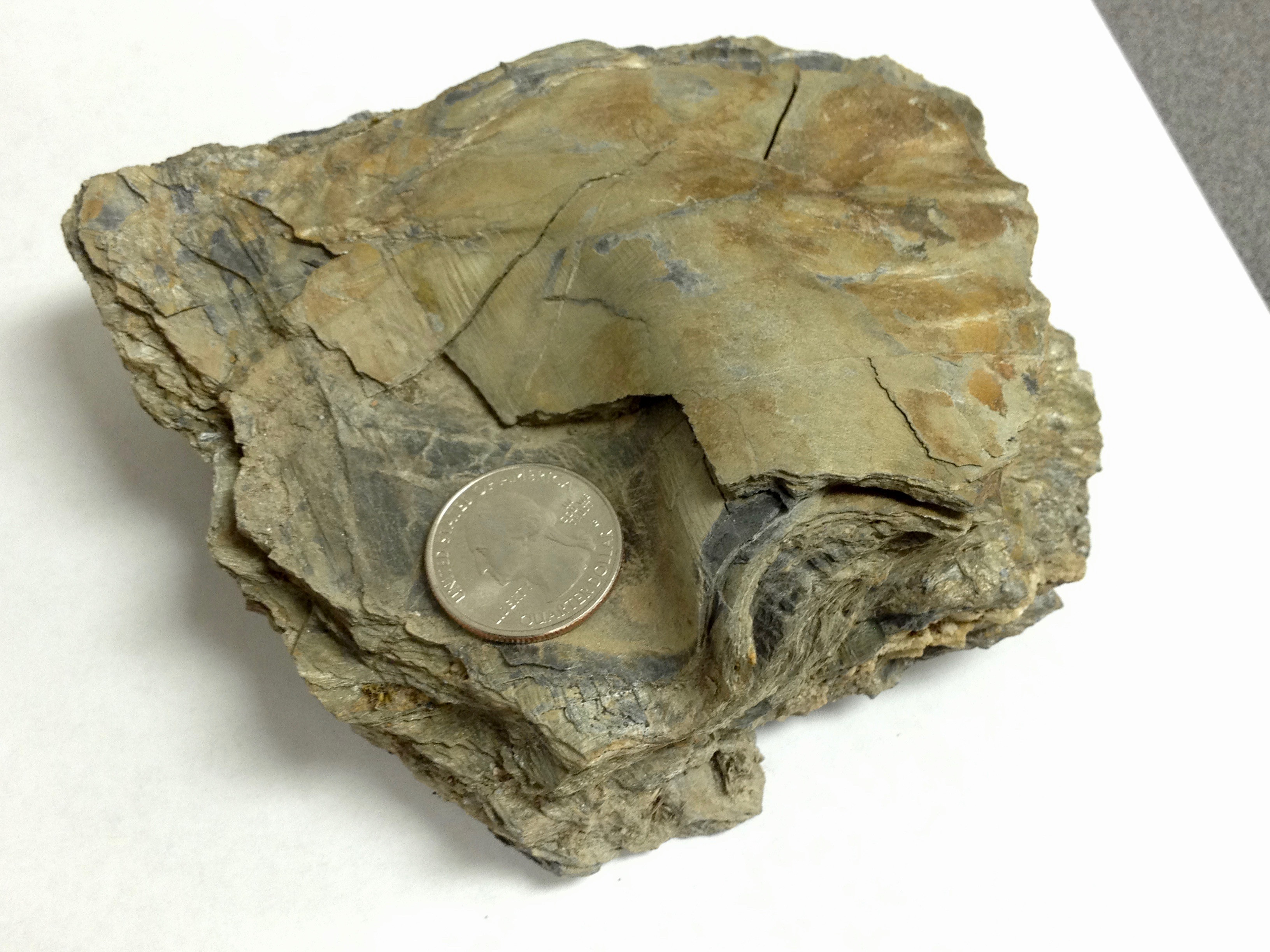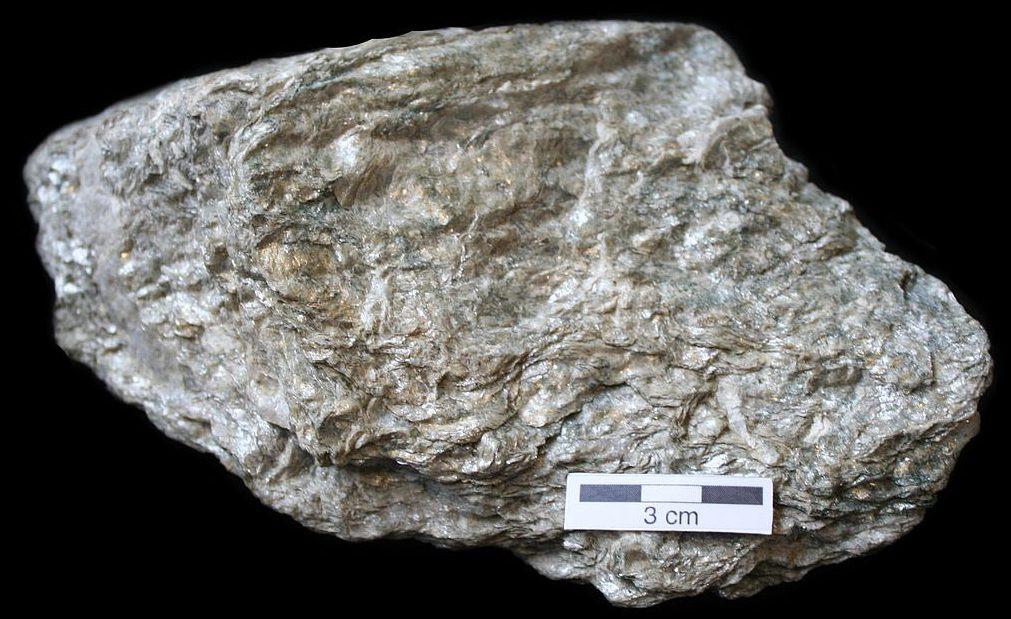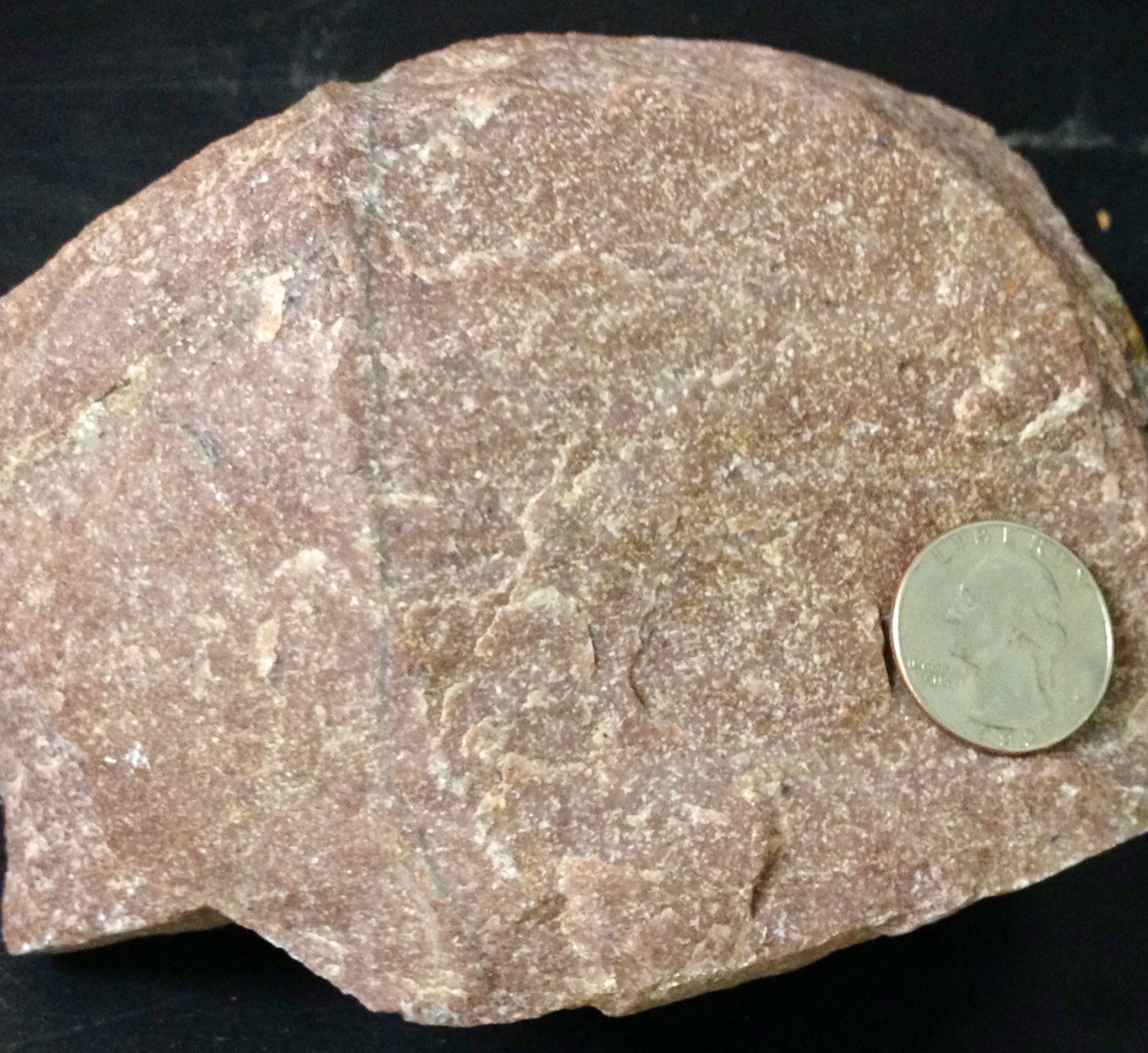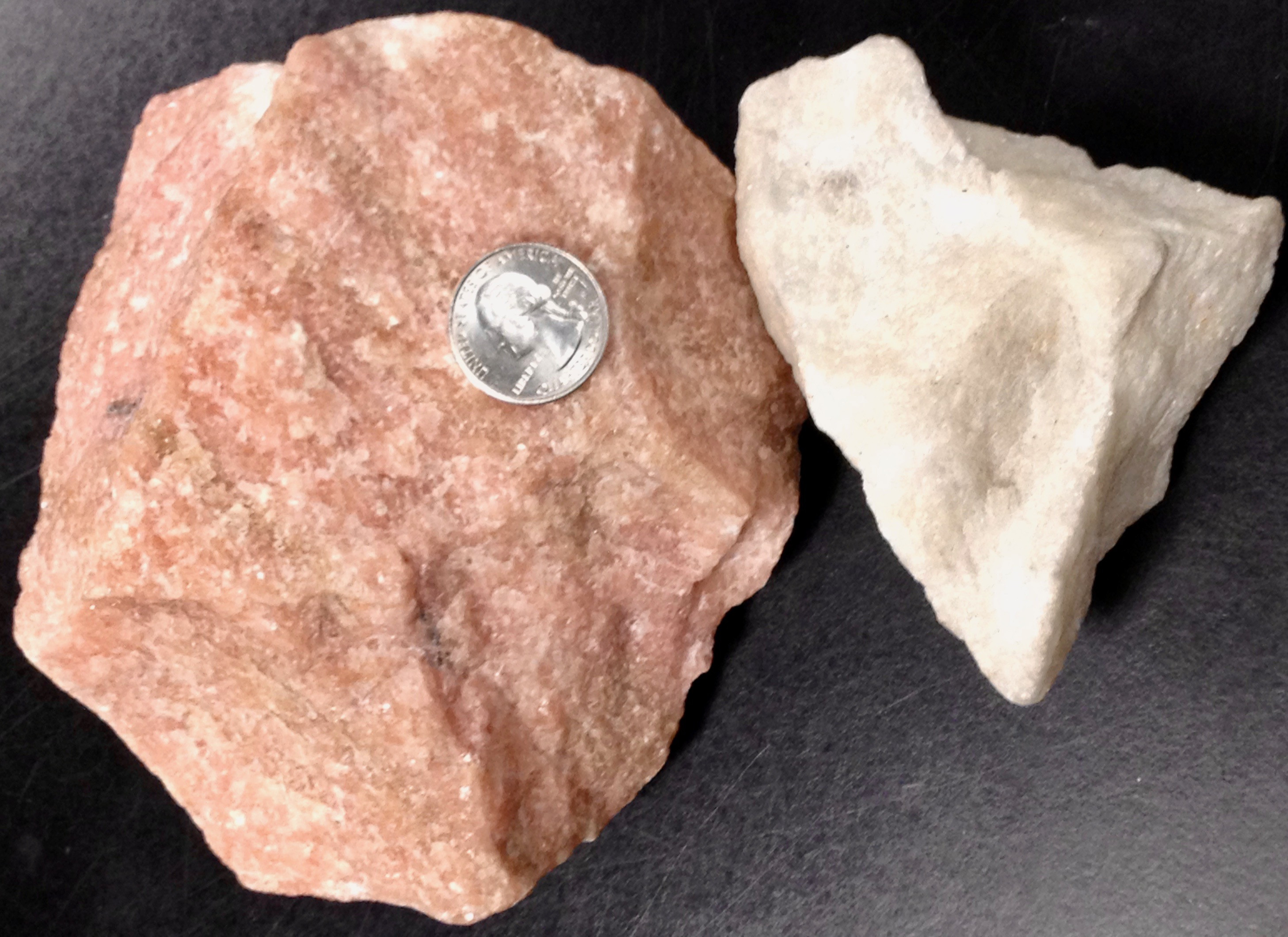Metamorphic rocks look vastly different depending on their origin and the conditions they endured; let’s explore how these transformed rocks appear and how you can use them to enhance your landscape with insights from rockscapes.net. Recognizing metamorphic rocks involves understanding their unique textures, mineral compositions, and the geological processes that shaped them.
1. Understanding Metamorphic Rocks
Metamorphic rocks are formed when existing rock types—igneous, sedimentary, or even other metamorphic rocks—are transformed by heat, pressure, or chemically active fluids. This process, known as metamorphism, occurs without melting the rock. Instead, the minerals within the rock recrystallize, changing the rock’s texture and sometimes its mineral composition. These transformations provide clues about the Earth’s dynamic processes and the conditions under which these rocks were formed.
1.1. The Metamorphic Makeover: Agents of Change
Several factors drive the metamorphic process. These include:
-
Temperature (Heat): Heat provides the energy needed for chemical reactions and recrystallization to occur.
-
Pressure: Pressure can be confining (equal in all directions) or directed (stress). Confining pressure causes minerals to recrystallize into denser forms. Directed stress, often associated with tectonic activity, can align minerals, leading to foliation.
-
Fluids: Chemically active fluids, such as water and carbon dioxide, can act as catalysts, speeding up reactions and transporting elements. These fluids can also introduce new elements, altering the rock’s composition. According to research from Arizona State University’s School of Earth and Space Exploration, hydrothermal fluids play a significant role in the formation of certain metamorphic rock types.
1.2. From Protolith to Masterpiece: The Starting Point
The original rock that undergoes metamorphism is called the protolith. The protolith’s composition and texture significantly influence the resulting metamorphic rock. For example, a shale protolith may transform into slate, phyllite, schist, or gneiss, depending on the intensity of metamorphism. Similarly, limestone can become marble, and sandstone can become quartzite.
2. Key Features of Metamorphic Rocks
Identifying metamorphic rocks involves recognizing their unique characteristics, which include texture, mineral composition, and metamorphic grade.
2.1. Texture: The Blueprint of Transformation
Texture refers to the size, shape, and arrangement of mineral grains within a rock. Metamorphic rocks exhibit two primary types of textures:
-
Foliated: Foliated textures are characterized by a parallel alignment of platy minerals, such as mica and chlorite. This alignment creates a layered or banded appearance.
- Slate: Slate is a fine-grained, foliated rock with a planar surface (slaty cleavage). It forms under low-grade metamorphic conditions from shale.
- Phyllite: Phyllite is similar to slate but has a slightly coarser grain size, giving it a silky or lustrous sheen.
- Schist: Schist is a medium- to coarse-grained, foliated rock with visible platy minerals, such as mica. It often contains porphyroblasts, large crystals of a particular mineral surrounded by a matrix of smaller grains.
- Gneiss: Gneiss is a coarse-grained, foliated rock with distinct banding of light and dark minerals. It forms under high-grade metamorphic conditions.
-
Non-Foliated: Non-foliated textures lack a parallel alignment of mineral grains. These rocks typically consist of one dominant mineral.
- Quartzite: Quartzite is a hard, non-foliated rock composed primarily of quartz. It forms from sandstone under metamorphic conditions.
- Marble: Marble is a non-foliated rock composed of calcite or dolomite. It forms from limestone or dolostone under metamorphic conditions.
- Hornfels: Hornfels is a fine-grained, non-foliated rock formed by contact metamorphism. Its protolith can vary, making it difficult to identify.
2.2. Mineral Composition: A Reflection of Change
The mineral composition of a metamorphic rock reflects the protolith’s original composition and the metamorphic conditions it experienced. Certain minerals, called index minerals, are indicative of specific temperature and pressure ranges.
- Low-Grade Metamorphism: Chlorite, muscovite
- Intermediate-Grade Metamorphism: Biotite, garnet
- High-Grade Metamorphism: Staurolite, kyanite, sillimanite
2.3. Metamorphic Grade: Gauging the Intensity
Metamorphic grade refers to the intensity of metamorphism, ranging from low grade to high grade. Low-grade metamorphism involves relatively low temperatures and pressures, while high-grade metamorphism involves high temperatures and pressures. As metamorphic grade increases, the rock’s texture becomes coarser, and new, higher-temperature minerals form.
3. How Can You Recognize Different Metamorphic Rocks?
Recognizing metamorphic rocks involves a combination of visual inspection, basic testing, and knowledge of their formation environments.
3.1. Slate: The Smooth Operator
Slate is known for its smooth, even cleavage, making it ideal for roofing and paving. Its color typically ranges from gray to black, but it can also be green, red, or purple.
3.2. Phyllite: The Shimmering Beauty
Phyllite’s distinctive sheen sets it apart. The fine-grained mica minerals reflect light, giving it a lustrous appearance.
 Phyllite with a small fold. (Source: Peter Davis)
Phyllite with a small fold. (Source: Peter Davis)
3.3. Schist: The Crystal-studded Star
Schist is easily identified by its visible platy minerals, such as mica. It often has a sparkly appearance and may contain porphyroblasts of garnet or other minerals.
 Schist
Schist
3.4. Gneiss: The Banded Wonder
Gneissic banding is a key identifier for gneiss. The alternating bands of light and dark minerals give it a distinctive striped appearance.
 Alternating bands of light and dark minerals.
Alternating bands of light and dark minerals.
3.5. Quartzite: The Durable Giant
Quartzite is exceptionally hard and resistant to weathering. It typically has a sugary texture and breaks across grain boundaries.
 Crystallized rock with interlocking crystals.
Crystallized rock with interlocking crystals.
3.6. Marble: The Elegant Classic
Marble is prized for its beauty and workability. It comes in a variety of colors and patterns and is often used for sculptures and architectural features.
 Marble
Marble
3.7. Hornfels: The Enigmatic Puzzle
Hornfels can be challenging to identify due to its fine grain size and variable protolith. Its hardness and dense texture are helpful clues.
4. How Metamorphic Rocks Appear in Landscapes
Metamorphic rocks play a vital role in landscape design, adding character, texture, and a touch of natural history to outdoor spaces. Their unique properties make them suitable for various applications, from structural elements to decorative accents.
4.1. Structural Uses: Building a Foundation
Metamorphic rocks are used for load-bearing walls, foundations, and retaining walls, providing strength and stability to structures. Their natural textures and colors can enhance the aesthetic appeal of these elements, blending them seamlessly with the surrounding landscape. For example, gneiss and quartzite are often used in retaining walls due to their durability and resistance to weathering.
4.2. Paving and Walkways: Creating Pathways
Slate, quartzite, and marble are popular for paving and walkways, offering durability, slip resistance, and visual interest. Slate’s natural cleavage creates smooth, even surfaces, while quartzite’s hardness ensures long-lasting performance. Marble, with its elegant patterns and colors, can add a touch of luxury to outdoor spaces.
4.3. Decorative Elements: Adding Accents
Metamorphic rocks are used as decorative elements, adding texture, color, and visual interest to landscapes. Boulders, rock gardens, and water features can showcase the natural beauty of metamorphic rocks, creating focal points and enhancing the overall aesthetic appeal. Marble and quartzite are popular choices for sculptures and decorative accents, providing elegance and sophistication.
4.4. Water Features: Enhancing Serenity
Metamorphic rocks enhance the beauty and serenity of water features, such as ponds, waterfalls, and fountains. Their natural textures and colors can create a calming, natural ambiance, while their durability ensures long-lasting performance in wet environments. Slate and gneiss are often used in water features due to their resistance to erosion and their ability to complement the surrounding landscape.
4.5. Rock Gardens: Showcasing Nature’s Art
Rock gardens showcase the natural beauty of metamorphic rocks, creating dynamic and visually appealing landscapes. The varying shapes, sizes, and colors of metamorphic rocks can add texture, depth, and visual interest to these gardens, creating unique and captivating outdoor spaces. Quartzite, gneiss, and schist are commonly used in rock gardens, providing a diverse range of textures and colors.
4.6. Erosion Control: Stabilizing Slopes
Metamorphic rocks stabilize slopes and prevent erosion, protecting landscapes from the damaging effects of water and wind. Their weight and interlocking shapes can hold soil in place, preventing landslides and preserving the integrity of the land. Gneiss and quartzite are often used for erosion control due to their durability and resistance to weathering.
4.7. Fire Pits and Fireplaces: Adding Warmth
Metamorphic rocks are also suitable for constructing outdoor fire pits and fireplaces, providing warmth, ambiance, and a natural focal point for gatherings. Their heat resistance and durability ensure long-lasting performance, while their natural textures and colors can complement the surrounding landscape. Quartzite and gneiss are commonly used in fire pits and fireplaces due to their ability to withstand high temperatures.
5. Choosing the Right Metamorphic Rock for Your Landscape
Selecting the right metamorphic rock for your landscape requires careful consideration of several factors, including the design style, climate, and intended use.
5.1. Matching the Design Style
Consider the overall design style of your landscape when choosing metamorphic rocks. Slate and quartzite fit well with modern designs, offering clean lines and a natural aesthetic. Marble adds elegance to formal gardens, while gneiss complements rustic landscapes.
5.2. Considering the Climate
Different metamorphic rocks react differently to various climates. Quartzite and gneiss resist weathering and are ideal for freeze-thaw conditions. Slate handles wet environments well, but marble may stain in acidic soils.
5.3. Considering the Intended Use
Select rocks with the appropriate durability and slip resistance for walkways, patios, and water features. For structural elements, choose rocks with high strength and stability.
5.4. Getting Expert Advice
Consulting with a landscape designer or geologist can provide insights into the best metamorphic rocks for your project. They can assess your site conditions, recommend suitable rock types, and advise on installation techniques.
6. Finding the Best Metamorphic Rocks for Your Landscape at rockscapes.net
Sourcing high-quality metamorphic rocks is essential for creating a stunning and sustainable landscape. rockscapes.net offers a wide selection of metamorphic rocks, expert advice, and design inspiration to help you create the outdoor space of your dreams.
6.1. Wide Selection of Metamorphic Rocks
rockscapes.net offers a diverse range of metamorphic rocks, including slate, phyllite, schist, gneiss, quartzite, marble, and hornfels. Their extensive inventory ensures you can find the perfect rock to match your design style and functional needs.
6.2. Expert Advice and Design Inspiration
rockscapes.net provides expert advice and design inspiration to help you choose the right metamorphic rocks for your landscape. Their team of experienced professionals can answer your questions, offer design tips, and guide you through the selection process.
6.3. High-Quality Products and Sustainable Practices
rockscapes.net is committed to providing high-quality products and promoting sustainable practices. They source their rocks from reputable quarries and employ environmentally friendly extraction methods.
6.4. Easy Online Ordering and Delivery
rockscapes.net offers easy online ordering and delivery, making it convenient to source metamorphic rocks for your landscape project. Their user-friendly website allows you to browse their inventory, place your order, and schedule delivery to your location.
6.5. Inspirational Project Gallery
Explore rockscapes.net’s project gallery to see examples of how metamorphic rocks can be used to create stunning landscapes. This visual resource provides inspiration and ideas for incorporating metamorphic rocks into your outdoor spaces.
7. The Geological Context of Metamorphic Rocks
Understanding the geological context of metamorphic rocks adds another layer of appreciation for their beauty and value.
7.1. Plate Tectonics
Metamorphism is intimately linked to plate tectonics. Regional metamorphism occurs at convergent plate boundaries, where mountains form. Subduction zone metamorphism occurs in subduction zones, where oceanic crust is recycled into the mantle.
7.2. Contact Metamorphism
Contact metamorphism occurs around igneous intrusions, where magma heats surrounding rocks. The intensity of metamorphism decreases with distance from the intrusion.
7.3. Burial Metamorphism
Burial metamorphism occurs in sedimentary basins, where rocks are buried under thick layers of sediment. The temperature and pressure increase with depth.
8. Common Misconceptions About Metamorphic Rocks
Several misconceptions exist about metamorphic rocks, leading to confusion and misidentification.
8.1. All Layered Rocks Are Metamorphic
Not all layered rocks are metamorphic. Sedimentary rocks can also exhibit layering, called bedding.
8.2. Metamorphic Rocks Are Always Hard
While some metamorphic rocks, like quartzite, are exceptionally hard, others, like marble, are relatively soft.
8.3. Metamorphic Rocks Are Always Expensive
The cost of metamorphic rocks varies widely, depending on the type, quality, and availability. Slate and quartzite can be affordable options, while high-quality marble can be more expensive.
9. Metamorphic Rock Identification Tips
Here are some practical tips for identifying metamorphic rocks in the field:
- Examine the texture. Look for foliation, banding, or lack of alignment.
- Identify the minerals. Use a hand lens or microscope to identify the minerals present.
- Test the hardness. Use a scratch test to determine the hardness of the rock.
- Consider the geological context. Think about the environment in which the rock formed.
10. The Lasting Appeal of Metamorphic Rocks
Metamorphic rocks have been valued for centuries for their beauty, durability, and versatility. From ancient monuments to modern landscapes, these transformed rocks have left an indelible mark on human civilization.
10.1. Historical Significance
Marble was used in classical sculptures and buildings, symbolizing beauty and prestige. Slate has provided roofs and floors, enduring centuries of weather.
10.2. Environmental Benefits
Using locally sourced metamorphic rocks in landscaping reduces transportation costs and supports regional economies. Metamorphic rocks can promote sustainability.
10.3. A Timeless Investment
Adding metamorphic rocks to your landscape offers both beauty and value. These resilient and ageless stones will improve your outdoor area for many years with the right maintenance.
FAQ: Understanding Metamorphic Rocks
1. What are the main types of metamorphic rocks?
The main types of metamorphic rocks are slate, phyllite, schist, gneiss, quartzite, marble, and hornfels.
2. How does metamorphism change rocks?
Metamorphism changes rocks by altering their texture and mineral composition through heat, pressure, and chemically active fluids.
3. What is foliation?
Foliation is a parallel alignment of platy minerals in a metamorphic rock, creating a layered or banded appearance.
4. What are index minerals?
Index minerals are minerals that form under specific temperature and pressure conditions, indicating the metamorphic grade of a rock.
5. How does contact metamorphism differ from regional metamorphism?
Contact metamorphism occurs around igneous intrusions, while regional metamorphism occurs over large areas due to tectonic forces.
6. What is the protolith?
The protolith is the original rock that undergoes metamorphism.
7. How can I identify quartzite?
Quartzite is hard, resistant to weathering, and breaks across grain boundaries.
8. What are the uses of metamorphic rocks in landscaping?
Metamorphic rocks are used for structural elements, paving, decorative accents, water features, and rock gardens.
9. How do I choose the right metamorphic rock for my landscape?
Consider the design style, climate, intended use, and seek expert advice.
10. Where can I find high-quality metamorphic rocks?
Visit rockscapes.net for a wide selection of metamorphic rocks, expert advice, and design inspiration.
Ready to transform your outdoor space with the timeless beauty of metamorphic rocks? Explore the possibilities at rockscapes.net today. Contact us at Address: 1151 S Forest Ave, Tempe, AZ 85281, United States or Phone: +1 (480) 965-9011. Let us help you bring your landscape dreams to life.